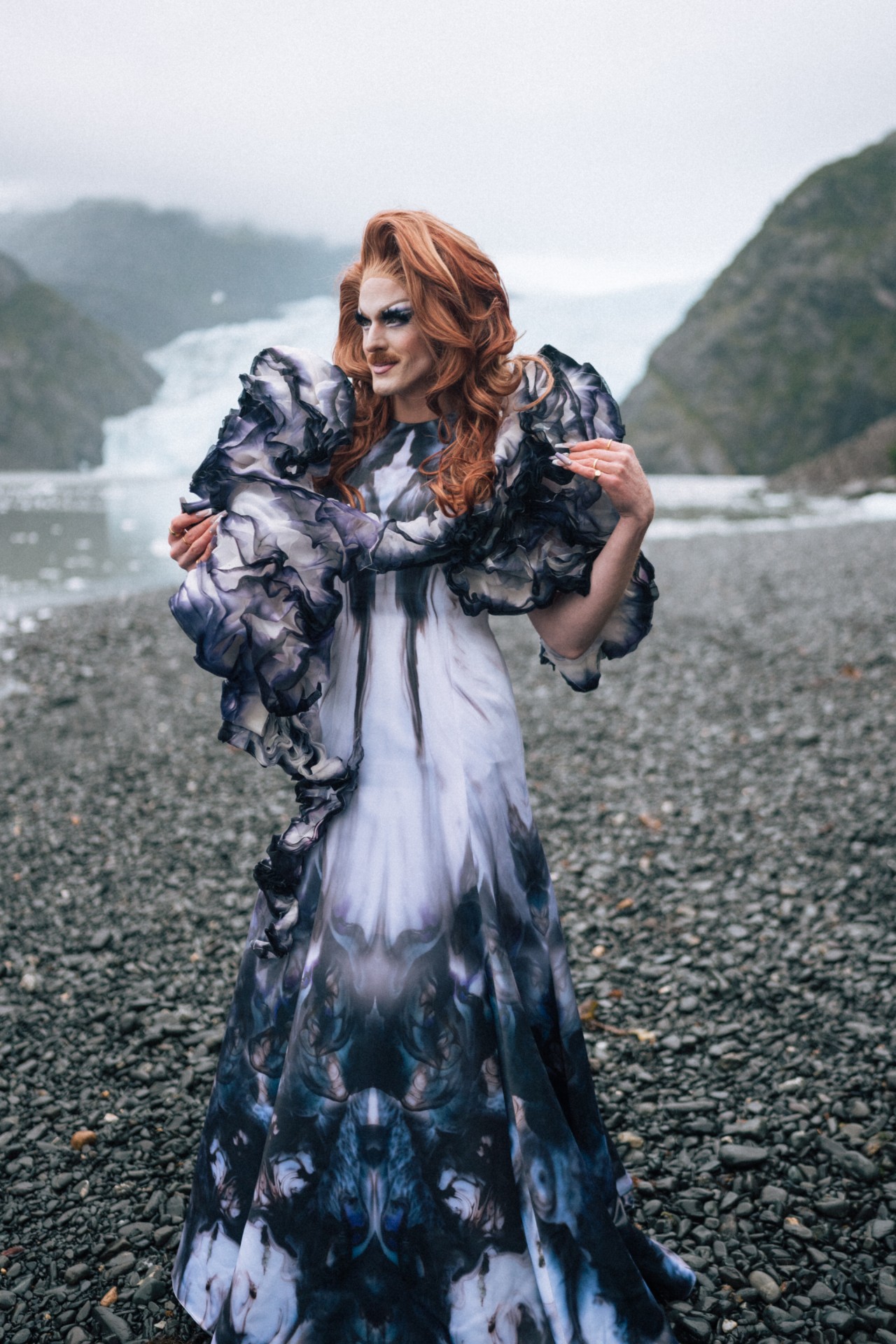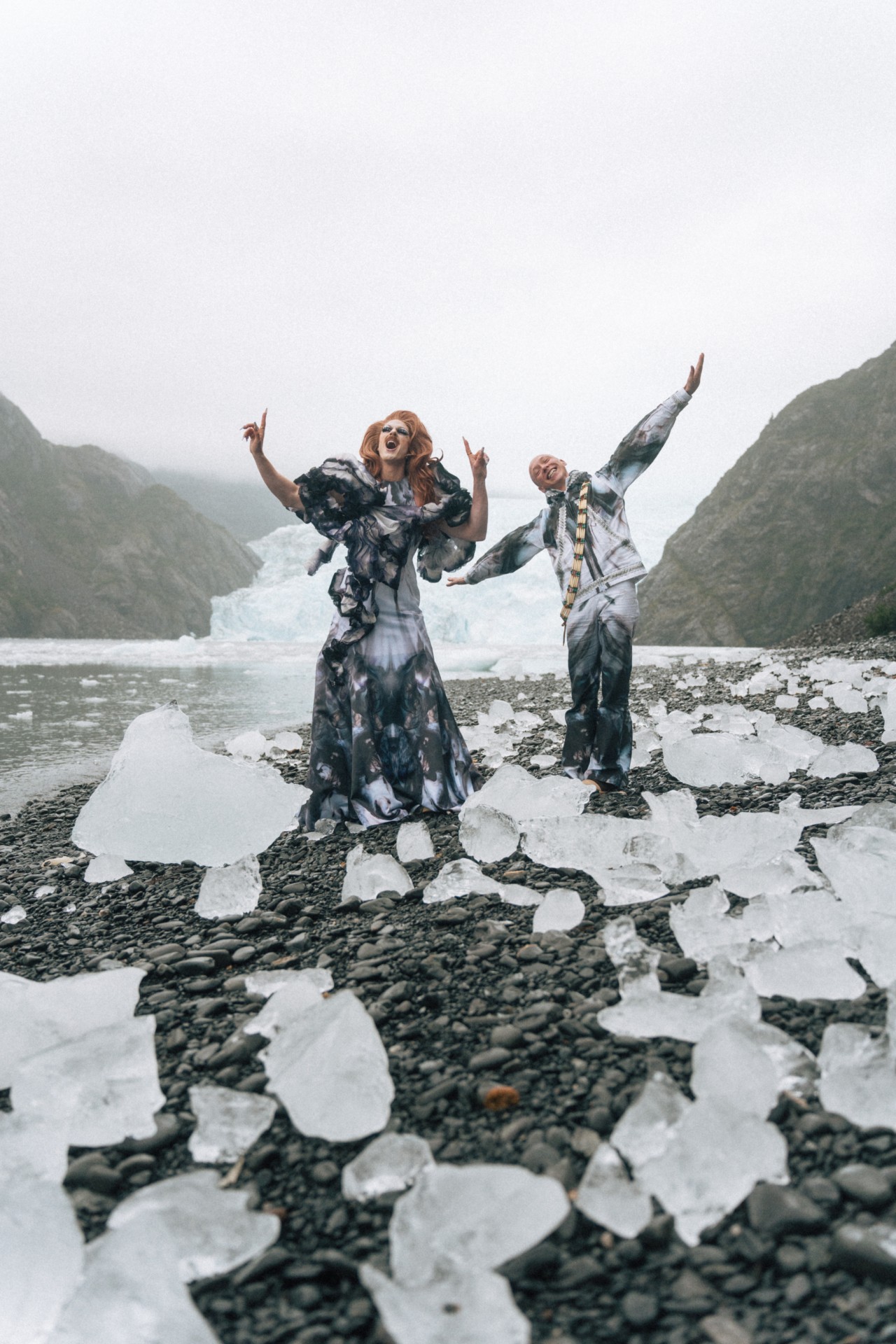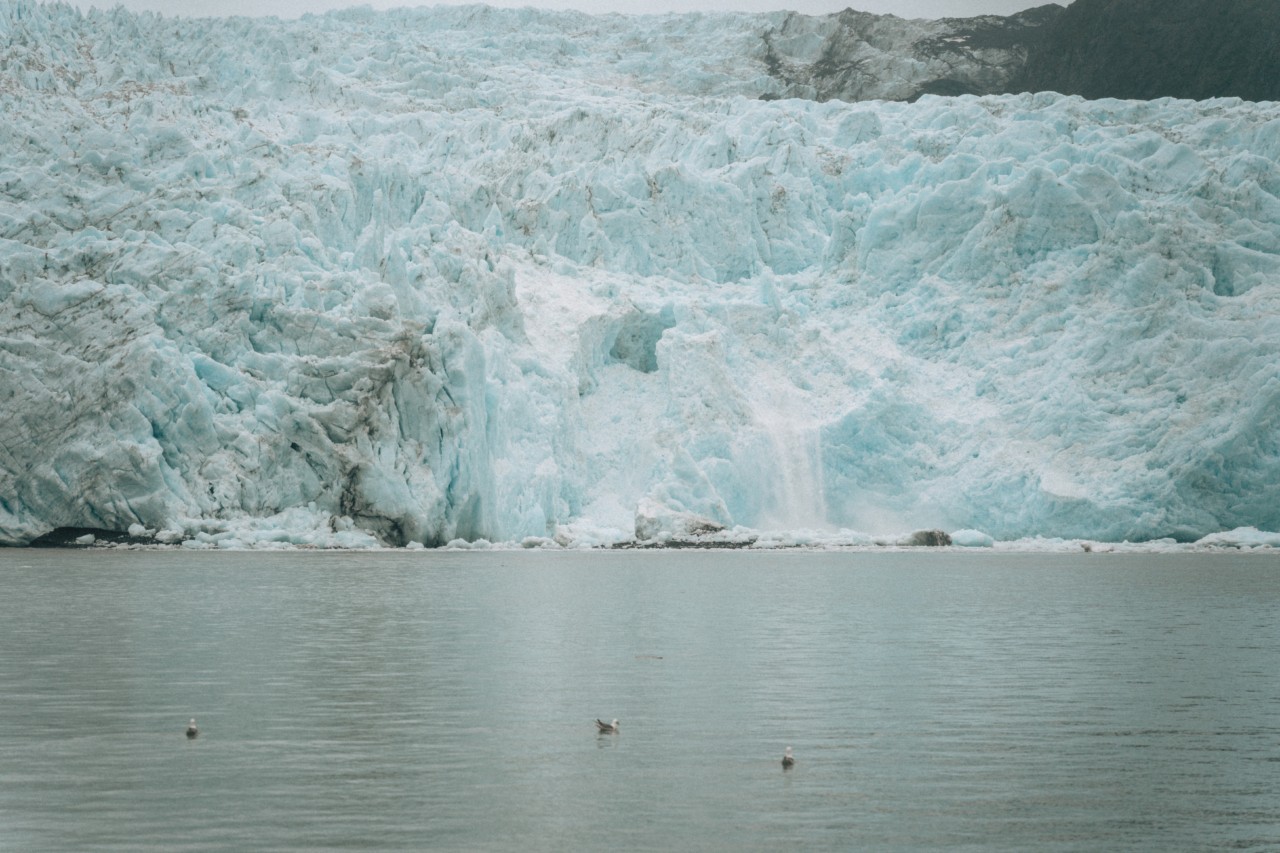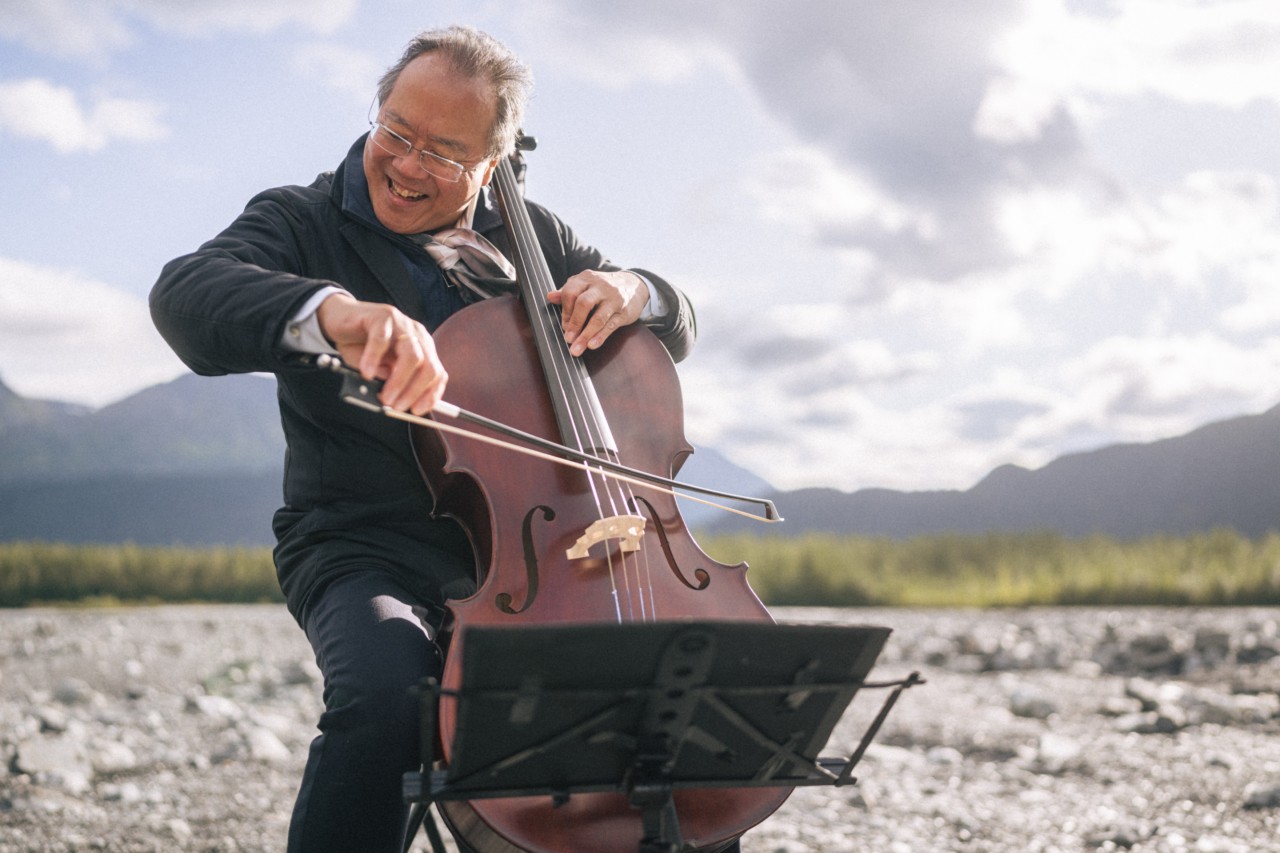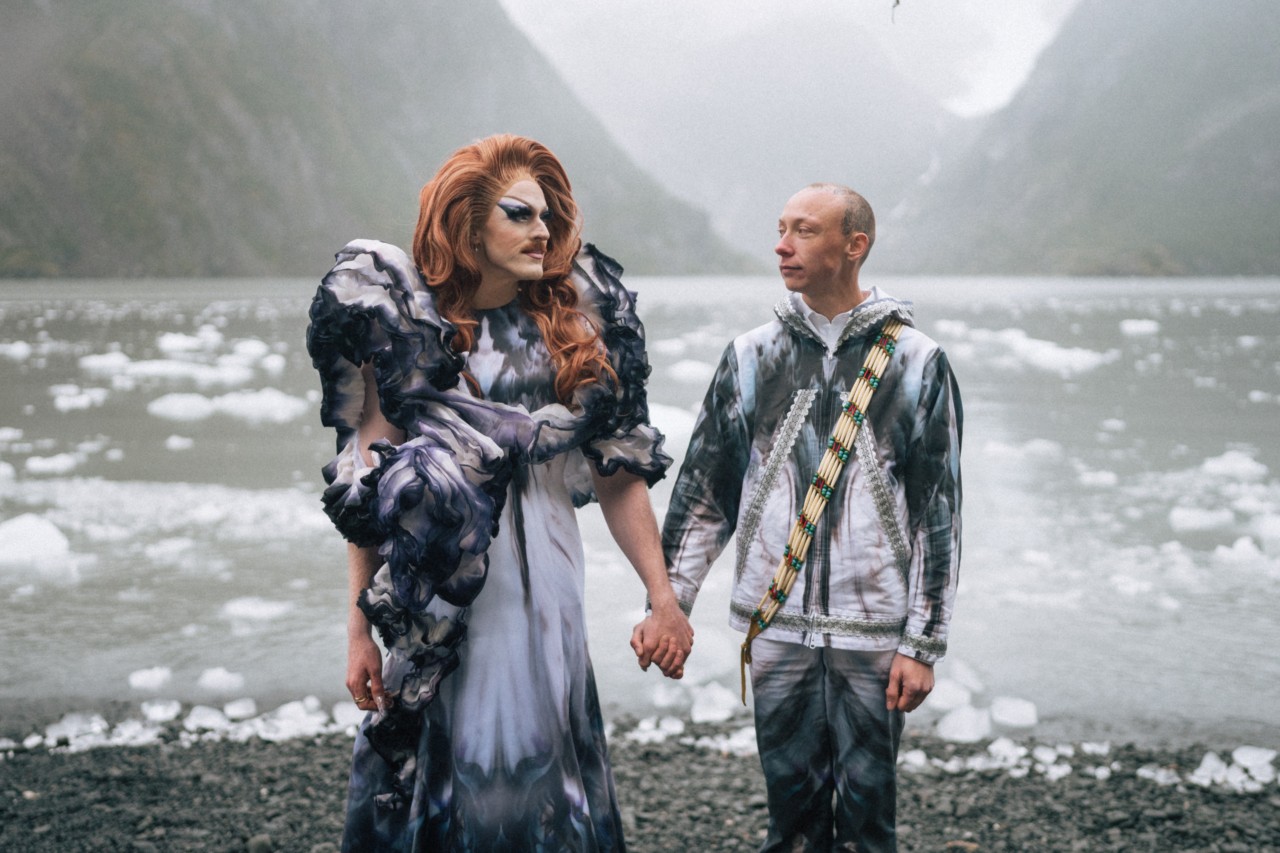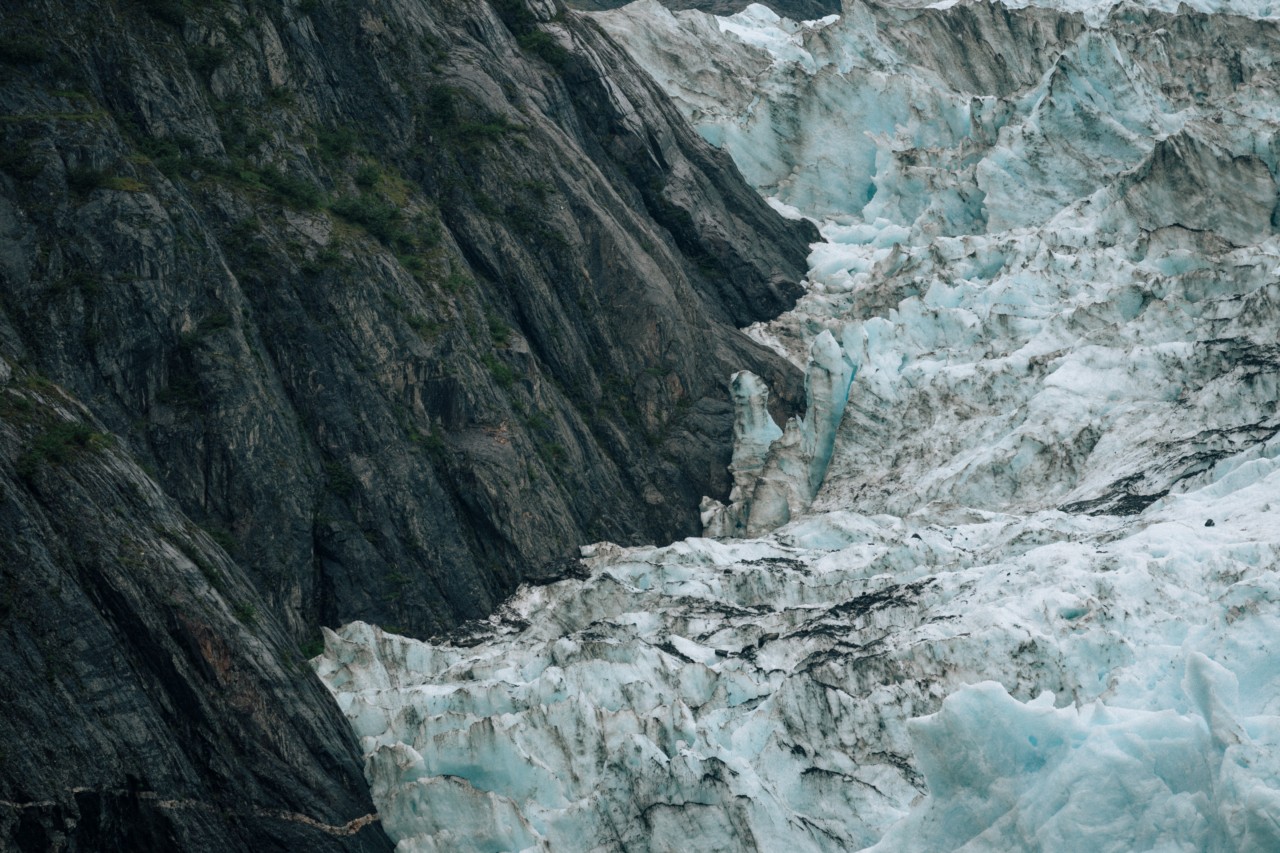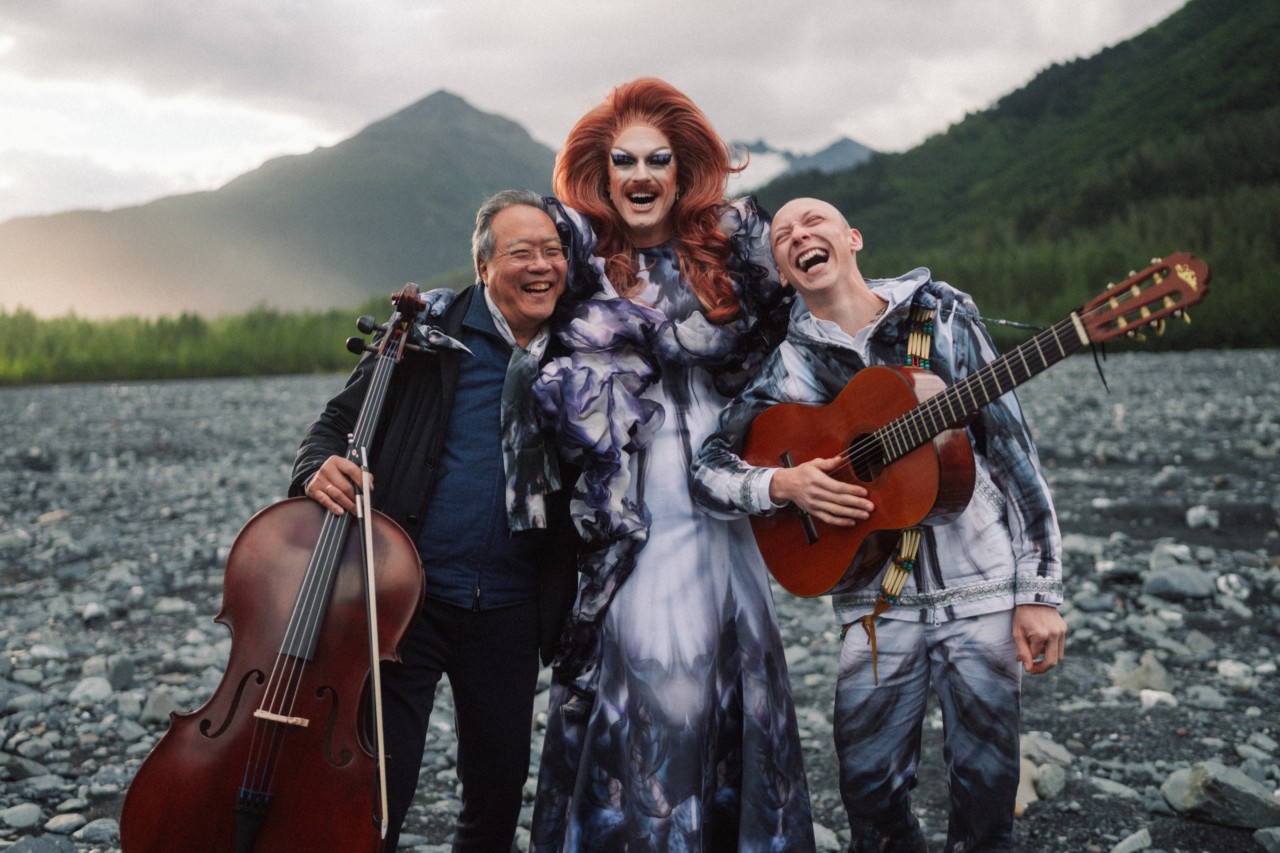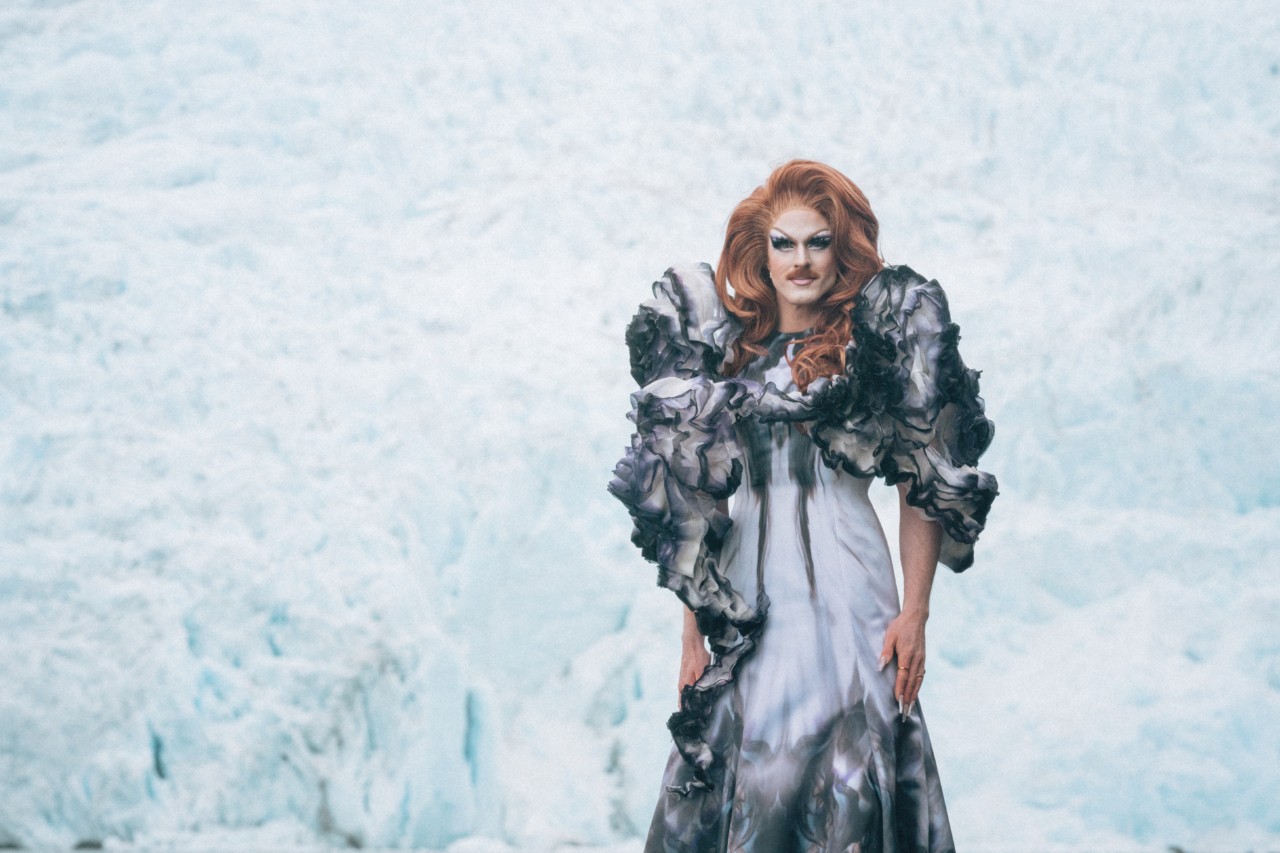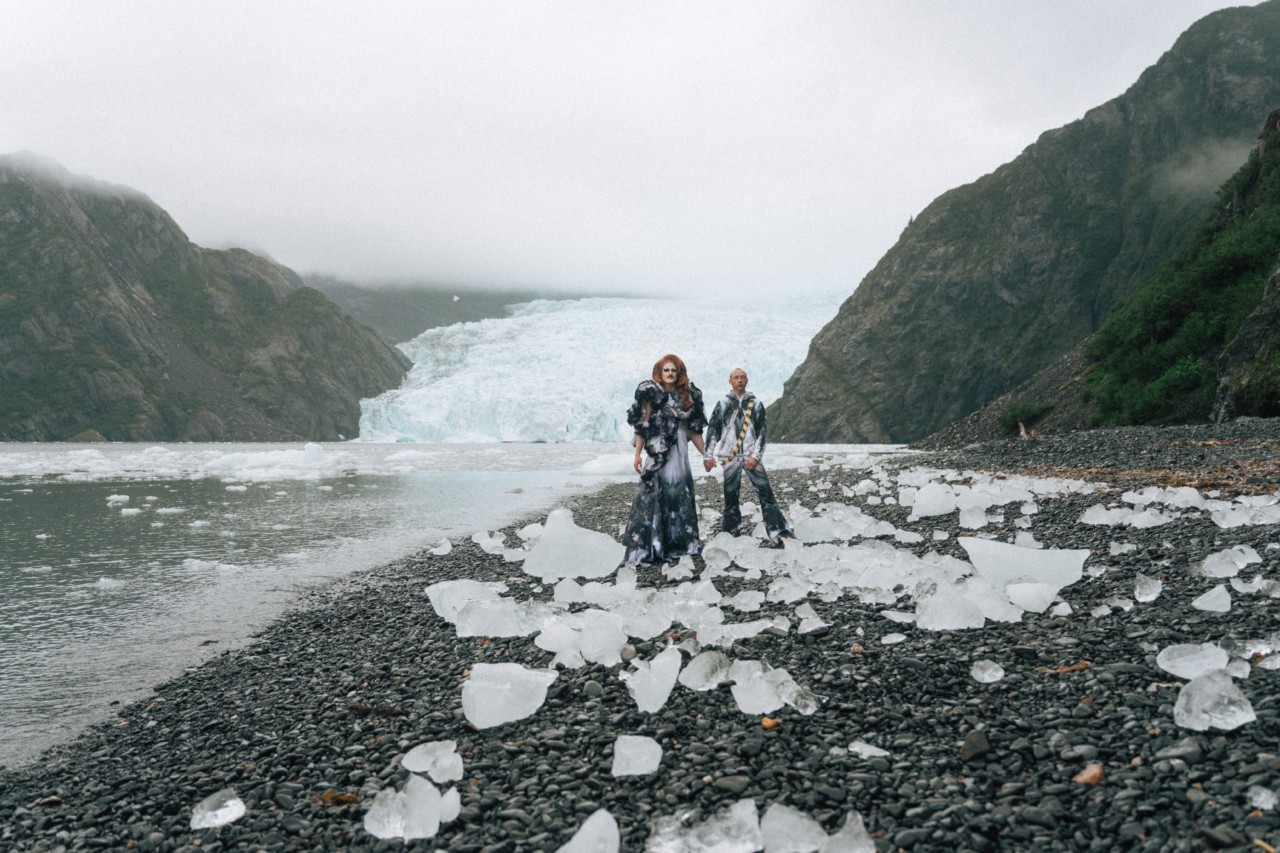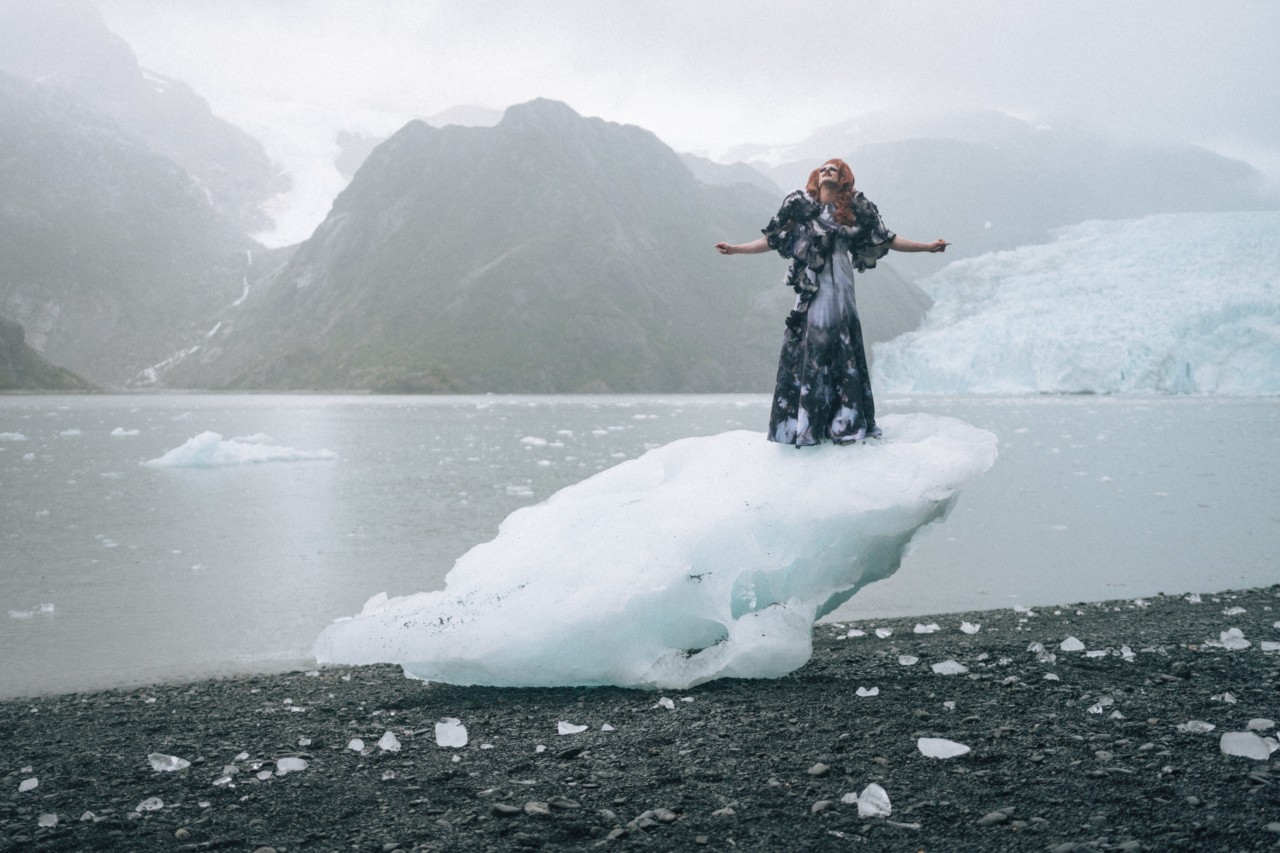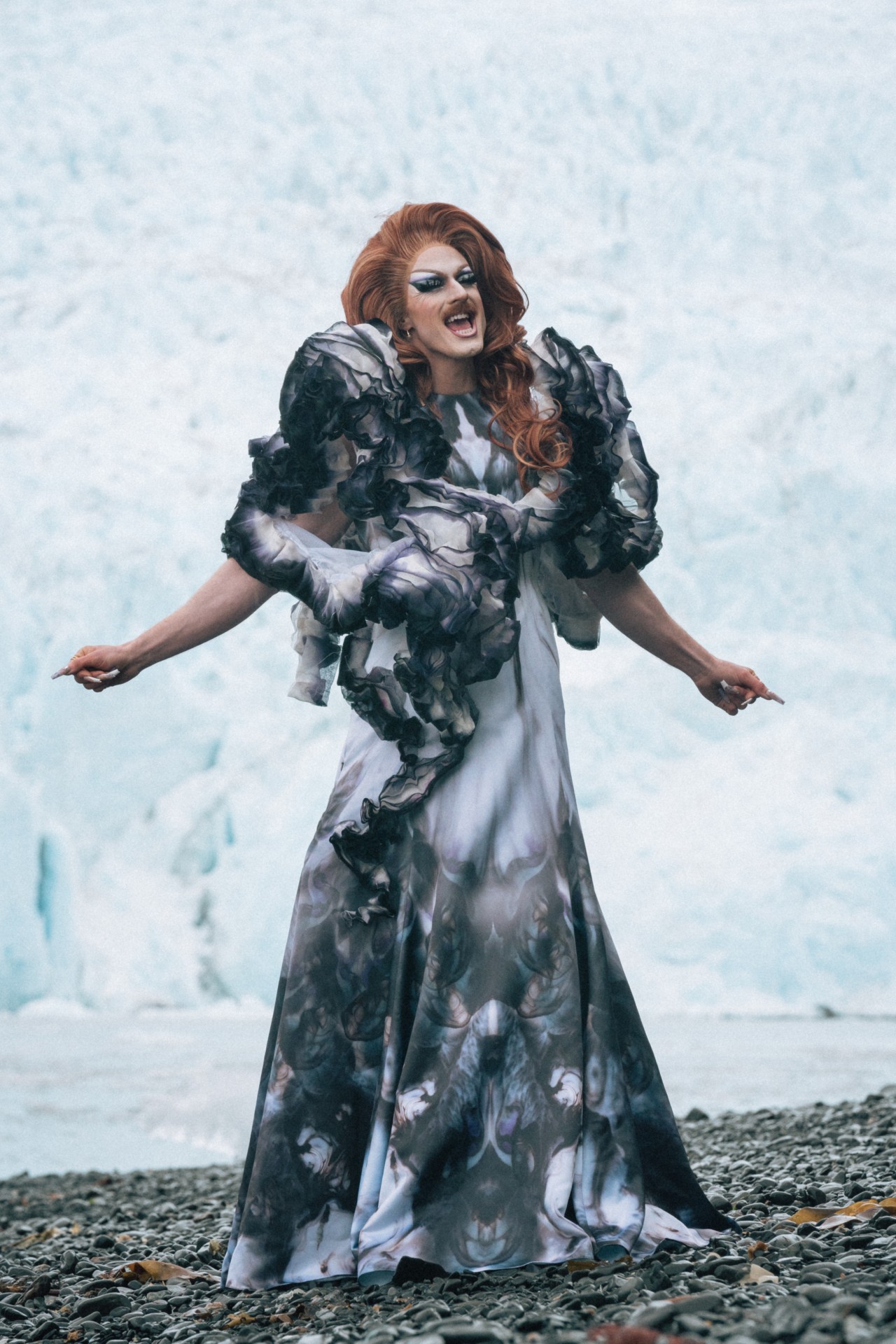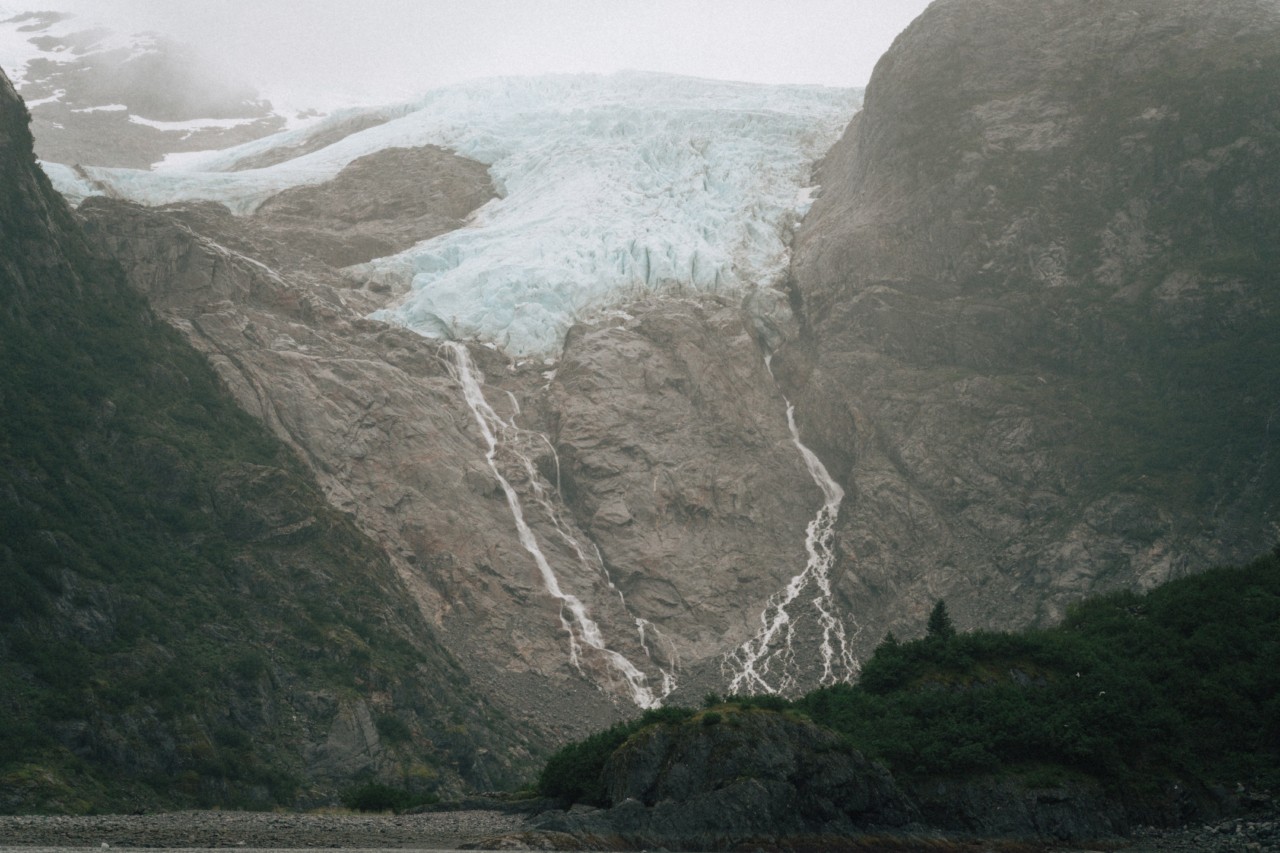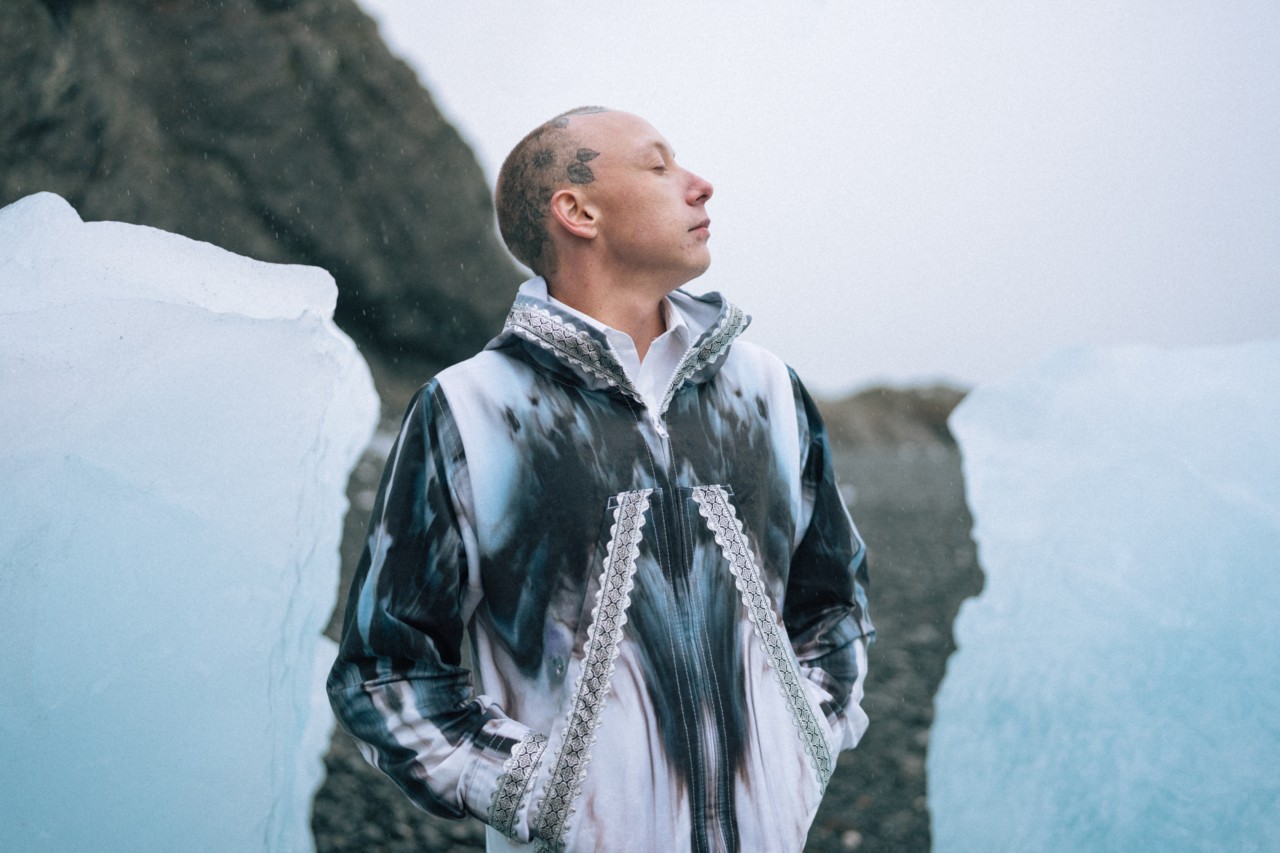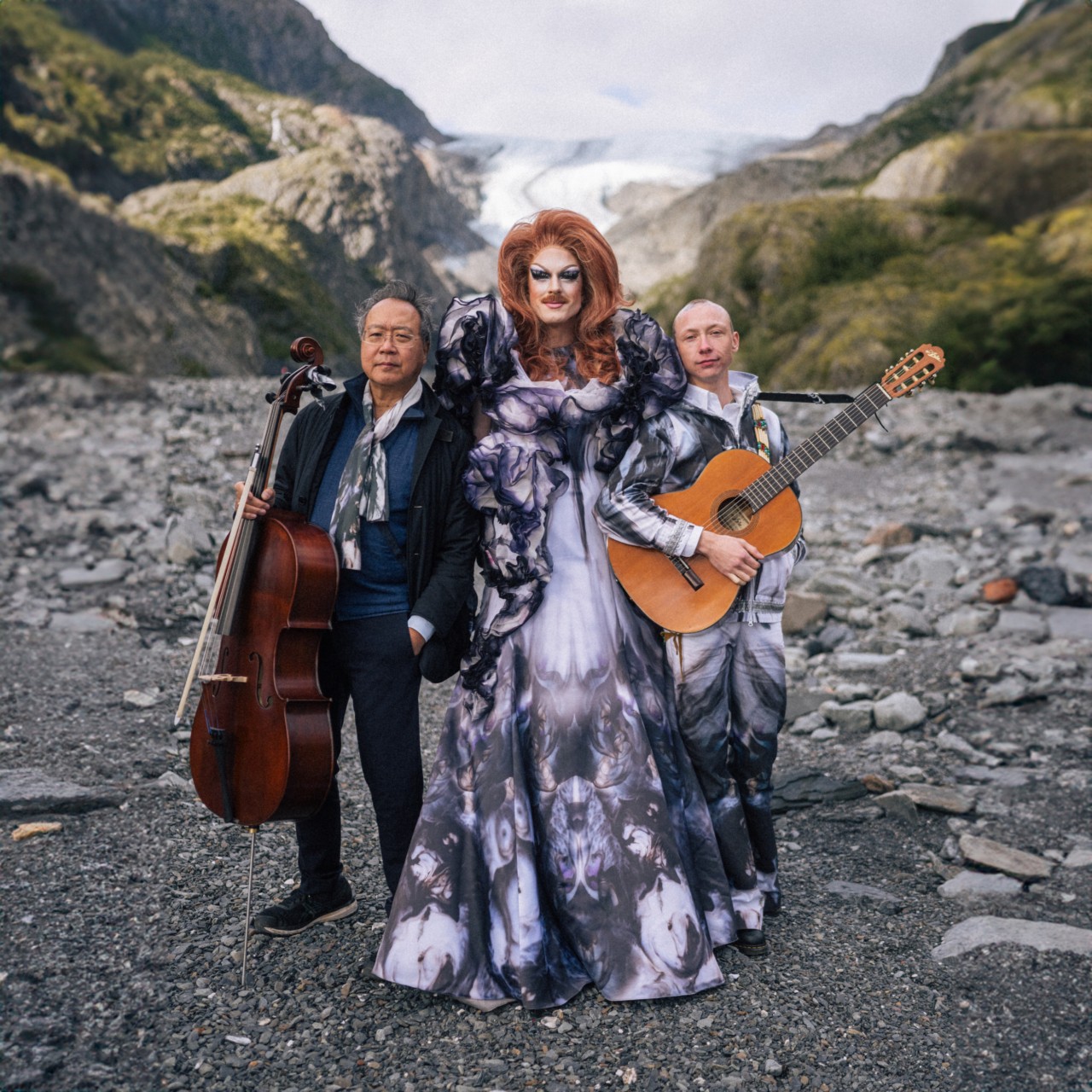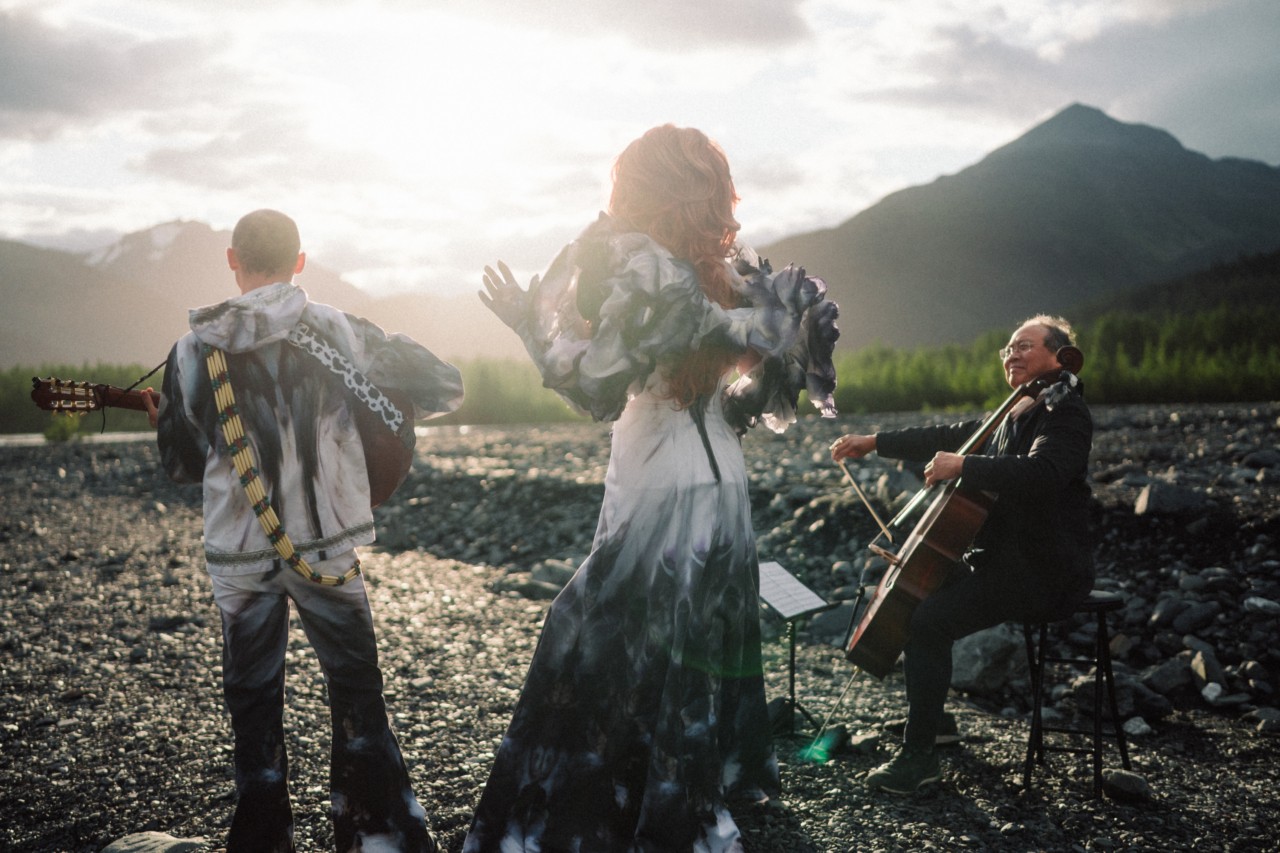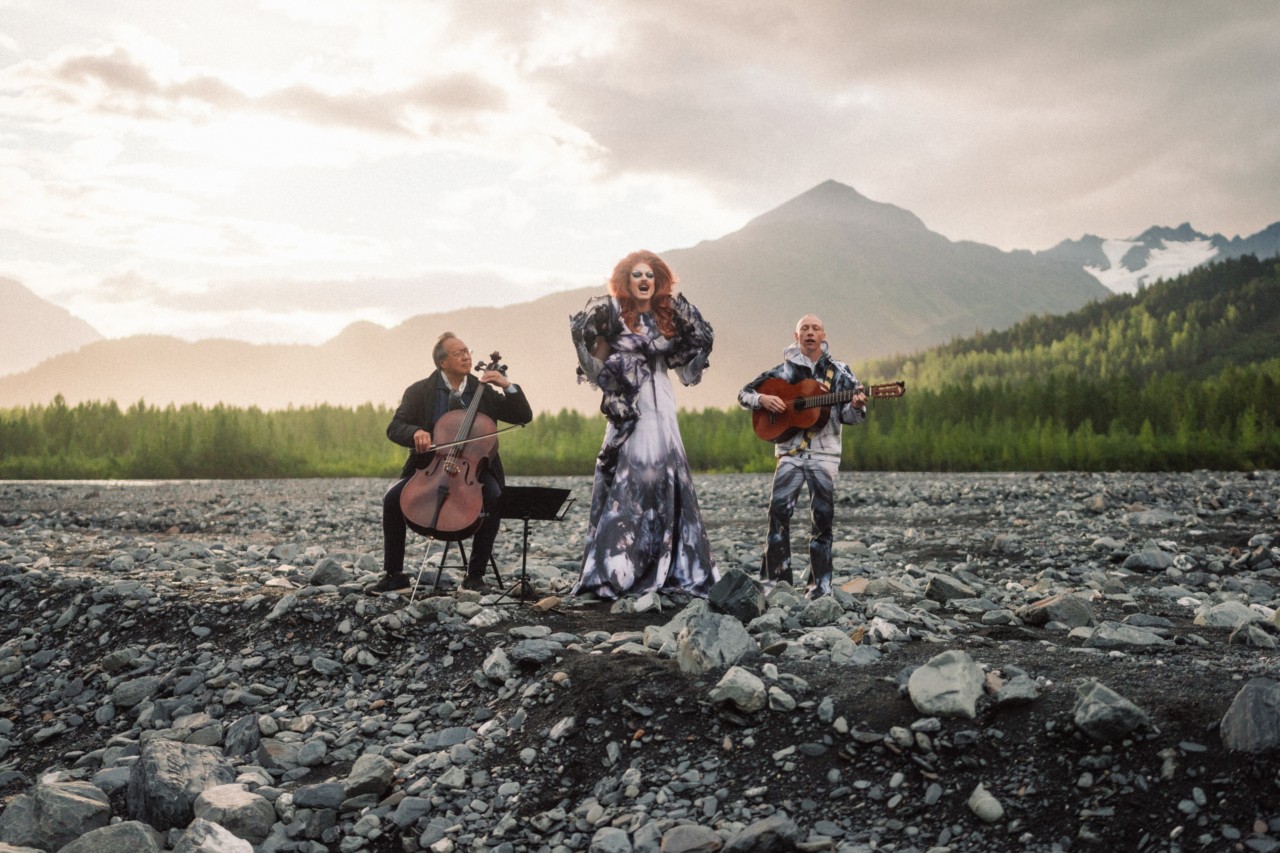

A still from "Won't Give Up". Courtesy of Pattie Gonia, Yo-Yo Ma, and Quinn Christopherson.
Words by Molly Lipson
Photographs by William Woodward
Drag queen Pattie Gonia, musician Quinn Christopherson, and renowned cellist Yo-Yo Ma might seem like unlikely collaborators, but together they have created a beautiful and powerful anthem for climate. “Won’t Give Up” is a moving and uplifting song that speaks to our interconnection with nature, staying hopeful and working together for a better world. “When I met Pattie and Quinn, it was clear we shared a purpose, a way of thinking about our roles as artists and as human beings,” Yo-Yo Ma told Atmos. “For me, music, culture, is a service — it’s about responding to need with the best of whatever we have to offer, and it’s always exciting to work with younger people; we have to think beyond our own generation.”
Pattie Gonia, known for her climate-themed take on drag, had the idea to write a requiem for our dying glaciers, a mournful musing on loss and grief. Then, she met with Christopherson, an Indigenous trans musician, who convinced Gonia to turn this into a song of hope. “Won’t Give Up” also features haunting and beautiful sounds from Yo-Yo Ma, the exquisite cello player who’s currently touring the world with his own cultural climate project Our Common Nature.
“Glaciers make sounds — incredible sounds,” said Yo-Yo Ma. “If you listen even for a few moments, you can hear them creak and groan; it’s a reminder that they are living beings, constantly moving and evolving, and now, dying. I wanted to capture their voice, and the great depth of it, something ancient and present, urgent.”
In the stunning music video, the three artists perform in front of the Holgate and Exit Glaciers in Christopherson’s native Alaska, donning sustainable, handmade outfits by Lisa Jiang, including a traditional qaspeq that was made by Chrisopherson’s great-aunt. Here, Gonia and Christopherson speak to Atmos about the project, what it was like working together, their hopes for the future, and the role of art in activism.



Atmos
This song could perhaps better be described as a project with multiple components and moving parts. How did it come about?
Pattie
I had had the idea to do a requiem for a glacier—something that could be performed at a funeral for a glacier. That idea was really indicative of my theory around activism a few years ago, this naming of things for what they are, and these glaciers are dying. I’ve had a really big change of heart and approach over the last few years in terms of seeing how, yes, the realities of climate change are so real, but so are the people, the solutions, the possibility, and the potential for change. If we want to build a movement, we have to create a culture where people can act in sustainable ways and be moved to action by long-term motivators that allow room for imperfection and progress rather than these short-term fear-based motivators. And then Quinn came on the project and said, what if we turned it into a really different thing?
Quinn
We had talked about this idea of doing a requiem for weeks, and I thought it was a really impactful, amazing idea. But then when Pattie and I got into the room together, we started talking about how we feel about nature and climate change, and it was like this wave washed over me and I thought, Hold on, we’re already giving up before the song has even started. In my experience of writing about my own life, yes there are dark times, but the way I can frame them now when I tell those stories can be with new empathy or new wisdom. To me, it feels like a strength to flip things over in a way that can be shared with more and more people, and it’s just as impactful. In my culture as an Alaskan Native, we feel like we and nature are not two different things—we’re the same, and so we’re going to treat nature how we treat ourselves. When I talked that through with Pattie it instantly clicked.

“When I met Pattie and Quinn, it was clear we shared a purpose, a way of thinking about our roles as artists and as human beings.”
Atmos
This idea of connection to nature really comes through in the song and the music video. Can you talk about how you brought that out?
Pattie
The outfits were designed by Lisa Jiang, an amazing, sustainable designer who took a zero-waste approach to all of these outfits, from my dress to Quinn’s two-piece to Yo-Yo Ma’s scarf. She hand-dyed all this fabric to symbolize air pollution, making the looks symbolic of the thing that is killing these glaciers. We tried to do everything with purpose in this project. For example, Quinn’s great-aunt made his qaspeq, the traditional jacket he wears in the video, and there are many other personal ties to this project as well. My dad’s from Alaska and after he died seven years ago I took his ashes to Holgate glacier where we filmed the video to scatter them. It felt very surreal to be back in the same place where his ashes are and it reminds me again of our connection to nature and how lucky we are to get a chance to fight for this thing while we’re alive.
Quinn
My great-grandfather was a really well-known violin maker who went by Frank Hobson the Eskimo Violin Maker. His instruments—violins, violas, cellos—were and still are some of the best instruments ever made. He made them by cutting down the trees, carving them by hand, and then playing them to feel if the wood was alive or if it was dead. If he felt it was dead, he would throw it away and start again. So, I have always felt a strong love for strings, of course, and when we just started talking about this song and bringing in Yo-Yo Ma, doing this in my home state, it all just felt really right the whole way through.



Atmos
It sounds like there was a lot of different inspiration for this project. What else has inspired you from the world of art and activism?
Pattie
I think that so much more art is activism than we think. Take music, it’s played such an important role in every single social justice movement on this planet, from the American Civil Rights movement with the song “We Shall Overcome,” to anti-war anthems, and I don’t know why it’s not playing more of a role with climate. From my very queer lens, I think that drag is nothing but political and is nothing but activism. All the way back to the queer rights movement, especially in the U.S., drag queens led the charge and I think they still do. I don’t often look at myself as a part of that, but I think so much about the collective power of drag and the effect it can have when it comes to community organizers, people that are living loudly and proudly.
But I also think that art as activism can be fun and collaborative and it brings people together. Often when we think of artists we think of solo work, but I think it is so impactful when art can really be community-based. I’m excited to have the starting line of this song, I’m excited to sing it with people and perform it with people. When we were in Alaska, we got to perform the song to a group of local youth artists, so that was about 50 people, and it was so special. I just can’t wait until even more people are singing it.


Atmos
It would be great to hear more about the community work you did in Alaska as well as filming the music video. What was that like and what was the impact?
Pattie
Yeah, so we did this giant artist share event with local Indigenous youth artists and organizers, including a drag show with local Alaska drag performers who are amazing. Through that we raised $66,000 for different Indigenous and women-led organizations in Alaska, which is great.
Quinn
And for the artist share itself, we made what Yo-Yo Ma would call “offerings.” which is when we just sit down and start playing something for people. We all gathered and people shared different things, so the group of youth had written a song, there was some poetry, and then we shared our song, followed by a big dancing group at the end, and then food. It was really native, really Alaskan, this idea of gathering, performing and eating together—that’s what my culture is steeped in. It was really special—and also silent! Any time a performance was happening, people were sat on the floor in pindrop silence. It was just beautiful.

Atmos
It’s definitely true that drag is political, as is preserving Indigenous culture and practices, that’s really special. The way that all comes together in this project is powerful. What was it like to create this song with such diversity in the room?
Pattie
Well exactly, what’s really powerful about songwriting is that who’s in the room matters. Case in point with “Won’t Give Up”—you get a completely different song when you put in different ingredients. I think that’s really indicative of our activism as well. If we always have people that look like us, or come from the same places as us, our activism isn’t going to be effective. But if we can change who’s in the room and imagine new ways to be, then I think it can look really different, which is how it should be. It should reflect people, all people.
Atmos
Turning the song into an anthem of hope, you allude to the idea that there are solutions out there, maybe different ones from what’s being discussed in the mainstream narrative. What do you mean when you talk about solutions?
Pattie
My theory of change when it comes to climate is, try to have an effect on what you can control. People fight for what they love, right? So if I can get people outdoors, especially queer youth that are oftentimes the most disconnected people from climate, and if they can fall in love with nature, then they’ll fight for it. One of the most harmful things in this world is how much capitalism has disconnected us from nature and from each other. There are so many climate activists that I really look up to who are bringing people together constantly. I look at what Quinn is doing to make music and community, especially for queer people. That takes so much work and is often so unseen.

“My theory of change when it comes to climate is, try to have an effect on what you can control. People fight for what they love, right?”
Quinn
Yes I totally agree. It’s about looking at wherever we’re at in the world and finding how the climate crisis is affecting us there. The solutions then come from within, they come from your community, and I think that’s where a lot of the change can happen. In Alaska right now, for example, they’re trying to build a huge road through a lot of Indigenous communities, it’s called the Ambler road, and it will interrupt migration patterns for the caribou which will change the entire ecosystem. I went on a tour with the band Portugal. The Man to spread awareness about the destruction through five remote villages, some of them not even on the road system. We got to speak to the chiefs, the elders, the youth of the villages, and they were all exactly on the same page. They know what’s best for their community and it really felt like we could win against the big corporations because we all know what’s right. I’m pretty sure if we all just take a second to see what’s happening right in front of us, the solutions will come closer.
Pattie
I really appreciate what Quinn said because it’s rare to find such powerful community spaces where people can come together. Shout out to what Yo-Yo Ma is doing as well. With his project, Our Common Nature, in every city he tours in, he stays an extra day or two and runs a completely private artist share with different musicians, poets, artists—anyone from any discipline can come and I just think that’s really beautiful.



Atmos
What do you hope people will take away after listening to this song?
Quinn
I want people to share it, to sing it, and scream it and feel it! A song is meant to be played many times over and leave you still not knowing exactly what it’s about or saying. This song is about us, it’s about nature, it’s about loving each other and nature. There are so many ways to feel it and for everybody to explore that.
Pattie
The beautiful thing about art is that when you put it out there, it’s no longer ours; it’s everyone’s, and we want everyone to feel like it’s theirs. I also want people to think about how social justice and environmental justice are inextricably linked. I want people to know that humans are not apart from nature, and I want people to take who you are, take what you’re good at, and apply it to what you care about in this world. If we do that, the world will never look the same.

Won’t Give Up was released on 13th November at 9pm PST.
Editor’s Note: This interview has been condensed and edited for purposes of length and clarity.
Why Pattie Gonia, Yo-Yo Ma, and Quinn Christopherson Won’t Give Up
